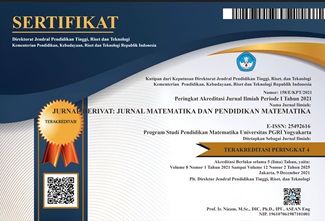Grey Double Exponential Smoothing Dengan Optimasi Levenberg-Marquardt Untuk Peramalan Volume Penumpang Di Bandara Soekarno-Hatta
DOI:
https://doi.org/10.31316/j.derivat.v3i2.715Abstract
Aircraft has  became the best choice for long distance traveling because it has shortest travel time than any other transportations. Moreover, in recent years, aviation industries have competed for providing low cost flight so that it can also be enjoyed by middle class society. Thus escalate the popularity of aircraft as economical carrier. Knowing the volume of passengers in advance will help government and related institutions to effectively providing facilities. The volume of passengers can be predicted using classic model such as double exponential smoothing model which is simpler and has high accuracy. However, the randomness of Indonesian passenger volume data cause double exponential smoothing (DES) cannot follow both data pattern and data trend. Moreover, classic model often encounters overfitting where the prediction is bigger than the actual data. Therefore, we employed Grey Method applied on DES (GDES) to overcome this problem. GDES enabled the researcher to perform better data fitting because it would generate smoothing curve which showed clearer trend. As the result, although GDES fitting curve had higher error measurement (MSE) than DES, the forecasting result of GDES was more precise than DES.
Â
Keyword: Double Exponential Smoothing, Grey Method, Levenberg-MarquardtDownloads
Published
Issue
Section
Citation Check
License
Authors who publish with this journal agree to the following terms:
-
Authors retain copyright and grant the journal right of first publication with the work simultaneously licensed under a Creative Commons Attribution-ShareAlike 4.0 International License that allows others to share the work with an acknowledgment of the work's authorship and initial publication in this journal.
- Authors are able to enter into separate, additional contractual arrangements for the non-exclusive distribution of the journal's published version of the work (e.g., post it to an institutional repository or publish it in a book), with an acknowledgment of its initial publication in this journal.
- Authors are permitted and encouraged to post their work online (e.g., in institutional repositories or on their website) prior to and during the submission process, as it can lead to productive exchanges, as well as earlier and greater citation of published work (See The Effect of Open Access).







